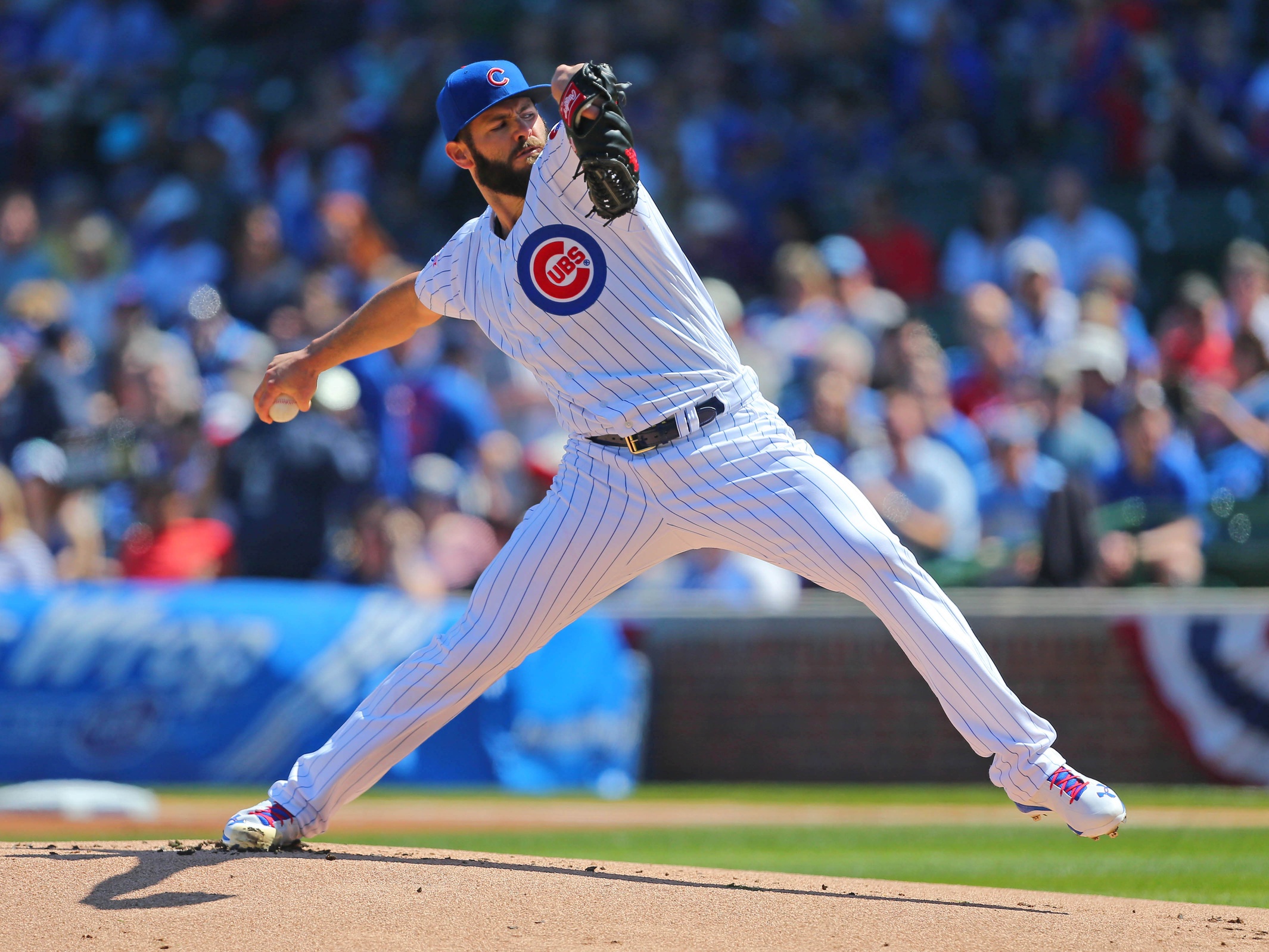The Chicago Cubs’ starting pitching has been phenomenal over the first two weeks of the 2016 season. There’s really nothing but good news. Entering Monday, no team had matched the Cubs’ 11 Quality Starts, and only the Nationals rotation had a higher average Game Score. By a narrow margin, the club led the league in average innings pitched per game started. They were even doing so on a middle-of-the-pack number of pitches, averaging 93 pitches per start, only eclipsing 100 throws twice. This has been a ruthlessly efficient, successful group, and relatively little strain has been placed upon them.
For as long as the quintet of Jake Arrieta, Jon Lester, John Lackey, Jason Hammel, and Kyle Hendricks keeps producing results that sparkling, there will be little reason to worry or complain. For that matter, since the Cubs’ offense is providing better run support than all but one other team thus far, it might not even hurt much if and when the rotation regresses. Things couldn’t be going much better for the starting staff.
Still, I’m left wondering. Before the season, the Cubs seemed intent upon shortening their leash with starting pitches, especially early in the season. They said they didn’t want anyone peaking too early, didn’t want Arrieta to tire in October the way he did in 2015, didn’t want to tax the high-mileage arms of Lester or Lackey, didn’t want Hammel’s long-standing second-half issues to resurface, didn’t want Hendricks to be overexposed. That was the rationale for the decision to break camp with eight pitchers in the bullpen, despite the positional depth the organization enjoyed. That was the presumed reason for their decision to focus on pitchers like Trevor Cahill and Clayton Richard (re-signed over the winter), and Adam Warren (acquired in the Starlin Castro trade). I liked the concept. I especially liked the idea of more relief outings stretching past one inning. I probably liked the idea of early, aggressive pinch-hitting even more than that. I didn’t particularly like that it meant carrying 13 pitchers, but if the usage of those arms proved creative enough, I expected the ability to use the bench more (and better) to outweigh the lack of bodies on that bench.
The 13 pitchers are here, but the rest of it hasn’t materialized. Only three Cubs relief appearances have lasted more than three outs, tied for the fewest in baseball. Pitchers have taken 29 plate appearances for them, more than for any other team except the Giants and the Dodgers. (The Giants and the Dodgers played 13 games over the first two weeks, all in NL parks. The Cubs, who visited the Angels to open the season, have only played 10 NL-rules games.) The deleterious effect we would expect that to have on the offense hasn’t materialized, really, thanks to the unlikely .635 OPS Cubs pitchers have posted, but the point stands.
Because of the low pitch counts his starters are maintaining, I think, Joe Maddon is going away from his preseason plan. He seems to think he needs to let his pitchers reach a certain threshold, to make sure they’re really getting in their work and building strength as the season goes on. Though of course there’s room for argument, I disagree with that premise. I think the Cubs quite possibly ought to do one of two things: stick to their original usage plan for their pitchers, or swap one of their underutilized arms (Neil Ramirez and Clayton Richard have made just five combined appearances, all in very low-leverage situations) for another bench asset. The former would mean embracing the opportunity the starters are providing, to keep their seasonal odometers low and fuel the offense. It’s not a crime for a starter to throw 75 pitches over five or six innings every so often. The latter would simply allow the team to use its full 25-man roster more efficiently than they have used it thus far.
(By the way, the same goal could be achieved if Maddon would get a little more comfortable using Warren, and a little less eager to deploy Travis Wood, especially in lower-leverage situations, or ones calling for more outs to be recorded. He’s ridden Wood hard in the early going. Indeed, going back to last season, I’ve noticed that Maddon is leery of going to his spare arms to eat up the last few innings of blowout Cubs wins. Certain pitchers seem only to get his trust when there’s nothing with which to entrust them, when the Cubs trail by more than a run. That deserves reconsideration, for the good of the entire relief corps, and for the long-term durability of the starters, and for the benefit of the club’s vibrant offense.)
Whichever way Maddon and the front office chooses to go, some change would be better than none. Things are great for the Cubs right now, but when challenges do arise, the team will be better prepared to meet them if they have better symbiosis between personnel and philosophy.
Lead photo courtesy Dennis Wierzbicki—USA Today Sports.

I haven’t read the latest “Incremental Gains” piece yet, but it looks like in Arrieta’s case he’s throwing fewer sliders. If he’s reduced his pitch count by 20-30 pitches and is throwing fewer high stress pitches, is innings length really that big of a concern?
Sounds like the most ideal scenario of the plan is unfolding rather than the lack of executing the plan. Low stress on starters, quality starts, a lot of run support, no one beat out Hendricks or Hammel for a spot in the rotation. It’s a long season, plenty of innings to be pitched, etc. etc. The fact that they haven’t had to start tapping the well is a good thing. The goal is to win the division so as long as things are working well there’s no reason to switch the formula.